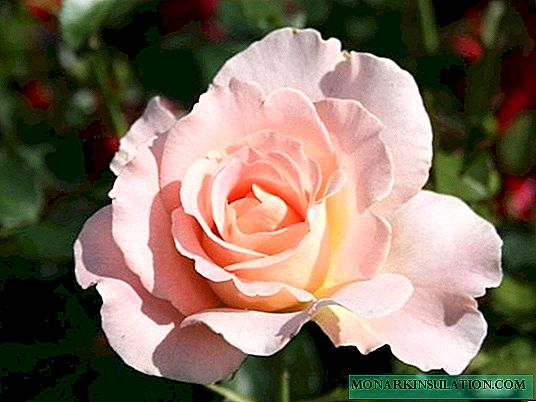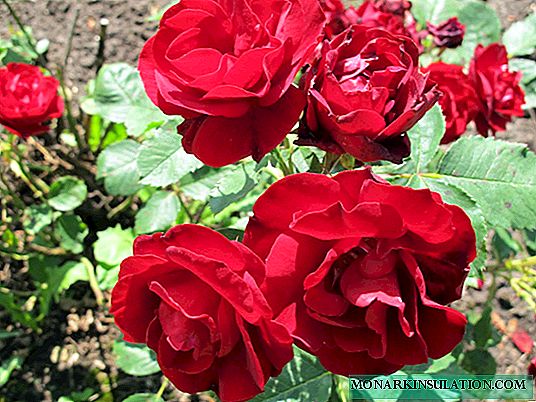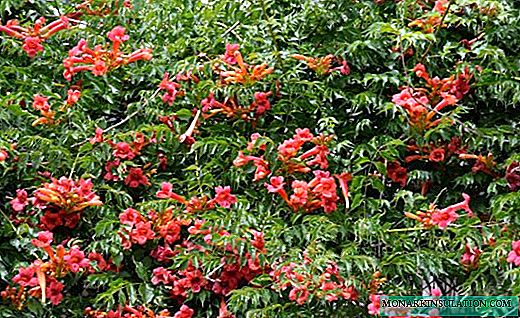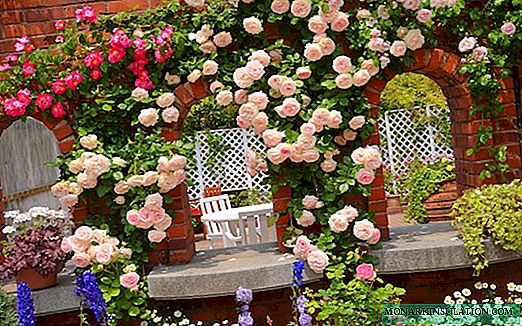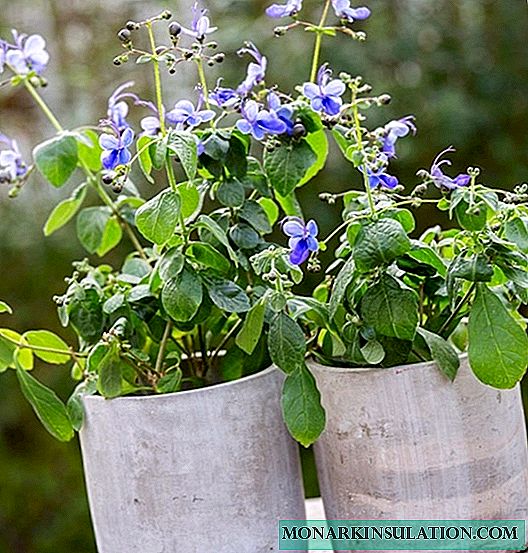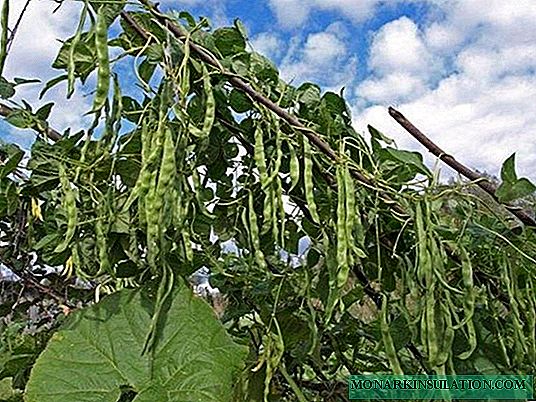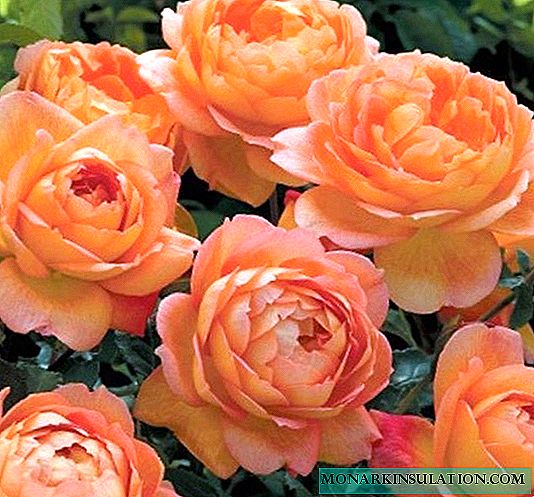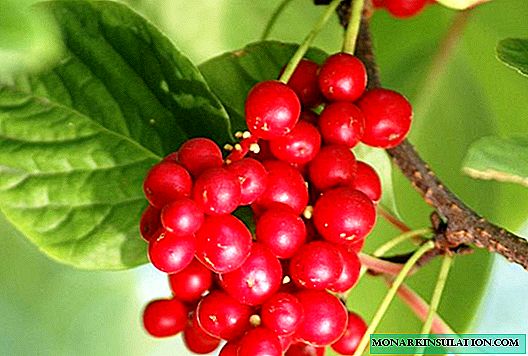
Chinese magnolia vine is a decorative liana with shiny brown stems and round juicy green leaves. The plant is able to decorate the gazebo, terrace or any vertical surface with thick openwork foliage. In addition, lemongrass has useful berries. And the plant itself belongs to the drug group. In the natural habitat, this vine grows with the help of seeds and root layers. in addition, gardeners have adapted to receive new plants also by dividing the bush and cuttings.
We prepare seeds from autumn, we grow seedlings by spring
Seeds are harvested immediately after picking berries. This requires the most ripened fruits. Fresh berries are kneaded and ground through a sieve or squeezed through several layers of gauze. It is easier to separate them from the remains of the pulp by mixing with sand, and then thoroughly washing and drying.
Do not store dried seeds for more than a year, otherwise their germination will be very poor.
Sowing seeds can also be done immediately after collection, i.e. in the fall. However, underdeveloped embryos are often found in fruits; germination in such cases usually does not exceed 25%. Therefore, it is recommended to plant lemongrass in the spring after special seed treatment.

Under-grown seeds are often found in the berries of the Chinese magnolia vine
Seed needs to be stratified. This is done using the following technology:
- In the last week of January, the seeds are soaked in water.
- Water needs to be changed every day, while throwing up pop-up seeds.
- Swollen seeds are mixed in a container with wet sand.
- They are kept during the first month at a temperature of 18-20 ° C, in the second month at a temperature of 3-5 ° C, in the third - 8-10 ° C.
- Periodically, the container must be opened for ventilation and moisten the sand when it dries.
- Sowing is necessary no later than the end of April.
During this procedure, the seeds ripen, and germination can reach 80-90%. It is important to withstand all time intervals, otherwise the seeds may not sprout.
Sowing is carried out in a specially prepared substrate, consisting of two parts of sod land, as well as sand and humus, taken in one part. Furrows with a depth of 1.5-2 cm are made on the bed at a distance of 15-20 cm from each other, into which seeds are sown. Then the surface of the ridge is leveled, watered and mulched by peat or humus.
In regions with colder climatic conditions, it is recommended to sow lemongrass seeds in boxes, which cover the first shoots paper. Then the boxes can be placed on the windowsill, but seedlings must be shaded from direct sunlight. When the sprouts acquire 5-6 permanent leaves, they can be planted in the ground.

For the successful development of lemongrass seedlings, the place for planting should be chosen taking into account all the necessary requirements
When shoots appear, they need to be covered from the bright sun, regularly sprayed twice a day (morning and evening), watered as necessary, weed and loosen the soil between the rows. In the first year of life, seedlings grow quite slowly, reaching only 5-6 cm in height.
In the second and third year, the root system is actively growing, in the fall of the third year, seedlings can reach a height of half a meter. In the fourth year, young animals can already be planted in permanent places. It is necessary to provide creepers with support for emerging climbing shoots. Seedlings begin to bloom no earlier than 5-6 years.

Schisandra firmly wraps around any support and is suitable for landscaping arches or arbors
Propagation by seeds is the most preferred method, since grown monoecious plants bear fruit much better.
Vegetative propagation
In addition to seed propagation, there are other ways to obtain young plants of Schisandra chinensis. Let's consider vegetative methods of reproduction in more detail:
- Cuttings. Cuttings are cut at the beginning of summer from semi-lignified shoots that have a greenish-brown color. Each handle should have at least 3-4 kidneys. After holding them in water for two days, the cuttings are planted in a greenhouse and sprinkled with a thick layer of sand. In this case, the lower bud must necessarily be in the ground, and the highest one is 5 cm higher than the ground level. Then, the plantings are covered with any garden material and are not opened until the fall. Watering is done through the fabric. For the winter, cuttings are dug up and placed in a box with wet sawdust, which is stored in a basement or cellar.
- Root processes. Propagation by root shoots is practically the most effective way. The processes in the spring carefully dig out from the mother plant and planted for growing.
- Division of the bush. To do this, you will have to dig a mother bush. It is best to carry out this procedure in the spring, autumn division can be fatal to the plant. From the main rhizome, segments of roots about 10 cm long are separated, having at least two buds. The roots are planted in fertile and loose soil on a bed or in a greenhouse. It will be possible to plant next year.
- Layering. Last year’s young shoots are bent to the ground in the spring, dug up and pressed with pegs. The top must be tied to the support. After 2 years, the offspring is separated and transplanted to the right place.
Video: propagation of Chinese magnolia vine
Choosing a place and time of landing
Chinese magnolia vine is a rather unpretentious plant. It should be planted in well-lit areas. He loves direct sunlight, but at the same time the lower part should be in partial shade, since the plant is very sensitive to drying out of the soil. We also note that lemongrass grows much better in places protected from the wind.

Chinese lemongrass tolerates shade normally, but bears fruit well only with sufficient lighting
Schisandra fit places near buildings, fences, arbors and other summer cottages. In the southern regions, plants are recommended to be placed on the east side, and in regions with colder climates, plots on the west side of the garden buildings are more suitable for them. It should be planted a vine at a distance of at least 1 m from the walls of buildings, since otherwise rainwater from the roof will flood the root system, which will negatively affect the well-being of the plant.
Planting is best done in spring, using seedlings 2-3 years old for this, they are considered the most viable. Their root system is well developed, and growth is still quite small (no more than 10-15 cm). In the southern regions, late autumn landing, which is carried out in October, is also acceptable.
Video: planting Chinese magnolia vine on the west and east side
We plant a liana in a permanent place
The procedure is simple:
- Digging trenches or pits with a depth of about 40 cm and a width of 60 cm.
- A drainage layer of at least 10 cm thick is laid at the bottom, consisting of broken brick, expanded clay or crushed stone.
- The substrate is made up of turf soil, leaf compost and humus, taken in equal proportions. The composition is recommended to add wood ash and superphosphate. The mixture fills the seats, where young seedlings are then planted. The root neck should never be deepened.
- After abundant watering, plants should be mulched with humus or peat.
Care will be protected from direct sunlight, regular watering, weed removal, loosening and spraying as necessary. Experienced gardeners recommend planting at least three seedlings at a distance of about 1 m from each other, so they will be better pollinated and bear more fruit.
Read more about leaving in our article - Schisandra chinensis: a description of the plant and recommendations for leaving.

You need to grow an elegant bush on a solid fence
It is very important to immediately provide the liana with a solid support along which it will climb up. The support should be 2.5-3 m high and withstand a very substantial mass of leaves of the future plant.
Branches that fall to the ground or are constantly in the shade will not bear fruit.
Features landing in Ukraine
The most favorable for the growth of Chinese magnolia vine are considered loose, light and fertile soils. He suffers drought and elevated temperatures with difficulty, therefore, the cultivation of this crop in Ukraine has some features. In the western and northern regions, suitable conditions for growing this plant, and in the southern and eastern regions will have to make more efforts. The soil where the liana will be planted should be loose and permeable. Sand, humus, compost and mineral fertilizers should be added to it. The plant will need regular plentiful watering and spraying of the crown.
With the creation of suitable conditions and good care, Chinese magnolia vine will be an excellent decoration of a garden or summer cottage. It will also delight its owners with an abundant harvest of very healthy berries and give you the opportunity to enjoy spicy, fragrant tea from tender leaves.


